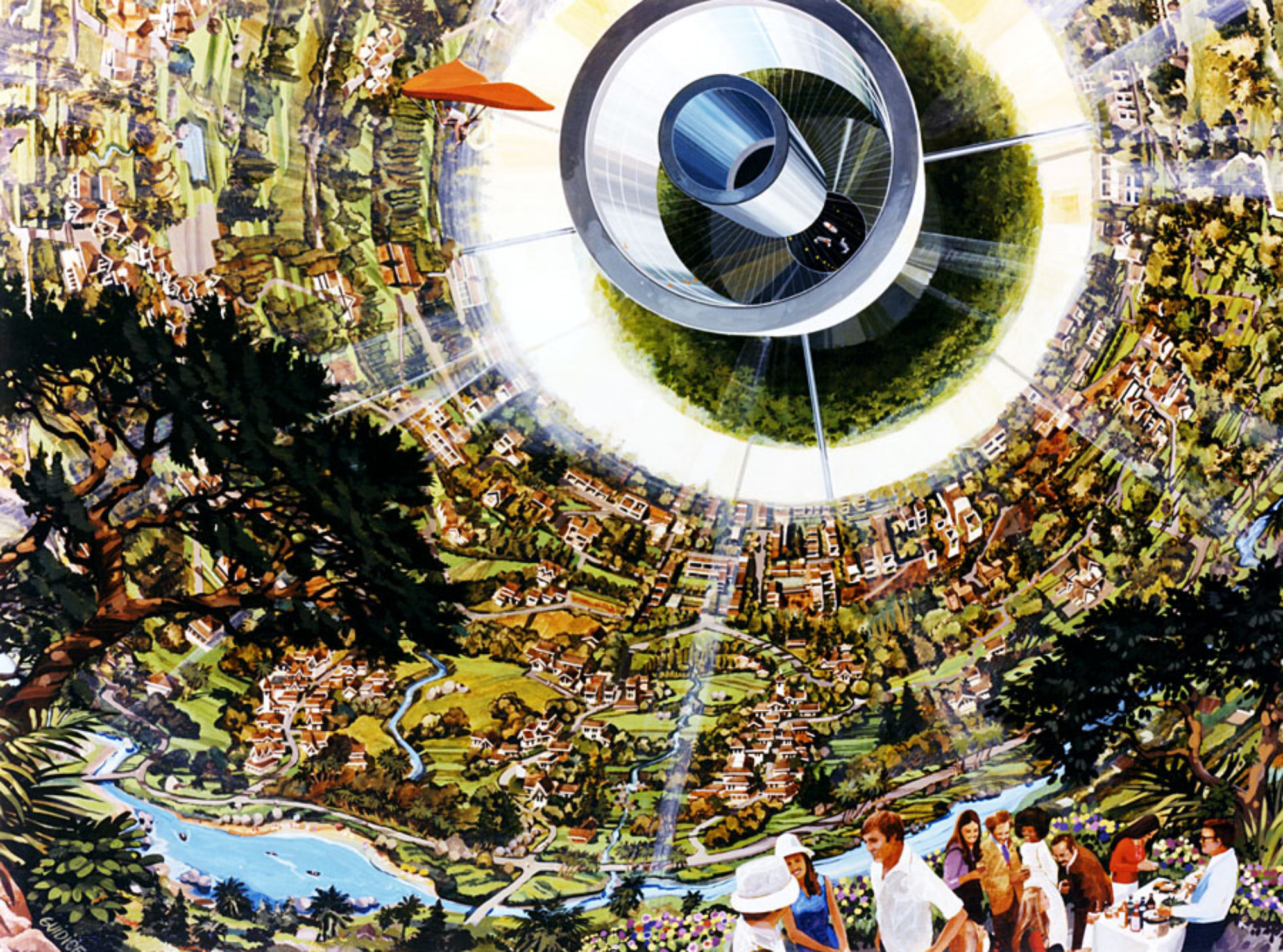
Space settlement will eventually require space farming to feed colonists and to provide life support. It’s clear that we will replicate our biosphere wherever we go. In that spirit, Bryce L. Meyer envisions Mars as the breadbasket of the outer solar system. In a presentation at Archon 45, a science fiction and fantasy convention held annually by St. Louis area fans, he makes the case for why the fourth planet would be the ideal spot to grow crops and feed an expanding population as part of the roadmap to agriculture in space.
Carbon dioxide and subsurface water ice are plentiful on Mars, critical inputs for crop photosynthesis. There is also evidence of lava tubes there which could provide an ideal growing environment protected from radiation, micrometeorite bombardment and temperature extremes. The regolith should provide good nutrients and there is already research on methods to filter out perchlorates, a toxic chemical compound in the Martian soil.

Another advantage that Mars holds as a food production hub for the asteroids and beyond is its placement further out in the solar system. Since it is higher up in the sun’s gravity well, Meyer calculates that it would take less than 43% of the fuel needed to transport goods from Mars outward than from Earth. He even suggests that with its lower gravity and recent advancements in materials research, a space elevator at Mars could be economically feasible to cheaply and reliably transport foodstuff off the planet.
Meyer keeps a webpage featuring space agriculture, terraforming, and closed cycle microgravity farming where he poses the question “Why settle space?” I like his answer: “Trillions of Happy Smiling Babies!!!”

Meyer is the founder and CEO of Cyan React, LLC, a startup that designs compact photobioreactors and provides expertise in closed-cycle farming and life support especially for space settlement and space habitats. He is also a National Space Society Space Ambassador doing his part to educate the public about the potential benefits to humanity through the use of the bountiful resources in space. In a presentation at this year’s International Space Development Conference, he describes his research on bioreactors explaining how settlers will grow food and recycle waste sustainably on the high frontier.

Complete closure and stability of an environmental control and life support system (ECLSS) is challenging and not without limitations. As launch and space transportation costs come down in the near future and off-Earth supply chains become more reliable, complete closure will not be required at least initially. In situ resource utilization will provide replacement of some ECLSS consumables where available for colonists to live off the land. As missions go deeper into space reaching the limits of supply chain infrastructure and even out to the stars, closure of habitat ECLSS and resource planning will become more important. Meyer has done the math for farms in space to provide food and air for trillions of smiling babies…and their families as they move out into the solar system.

If you really need to grow food in underground lava tubes, so, with a closed cycle and no sunlight, you could as well have your farm in the asteroid belt, where your colonies are. Looks like same effort, way, way closer, and no gravity well. There should be enough raw materials nearby as in the belt as well.
Thanks Oleg! The idea for placing the settlement in a lava tube is for protection from GCR radiation. You’ll need that in the asteroid belt as well so we’ll need to either bore into a larger asteroid or process them into shielding. Jim Logan has suggested doing this at the Martian moon Deimos which is for all intents and purposes, at the top of the planet’s gravity well. Check out this post for more info: https://spacesettlementprogress.com/the-art-of-bioneering/. Not sure I understand your statement that asteroid belt would be way closer…its further out!
I wrote that the asteroid belt would be closer because “outer solar system” presumably includes a lot more than just Mars. There’s a good chance I misunderstood that.
In either case, I think it is good to grow food not too far from where one’s settlements are, as otherwise it may take many months or years to get the food, given that two bodies circling the Sun in close orbits can be close sometimes, and at the opposite ends of the solar system at some other time.
I would not think heavy radiation protection is that essential in order to grow food. Some protection is of course necessary, but a wall of water or some other shielding maybe 1 meter thick could do. If a tomato gets hit by a cosmic ray sometimes, it will likely be fine.
Anyhow, good think about such things. I appreciate seeing such articles.